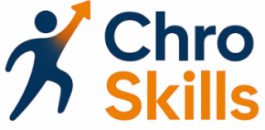
Understanding the Strategic Role of a CHRO in Education
Aligning Human Resources with Educational Vision
In the realm of education, the role of a Chief Human Resources Officer (CHRO) extends far beyond administrative tasks. It is an integral component of strategic planning, contributing significantly to crafting a vision statement that echoes throughout every plan within the school or district. This alignment is crucial because it ensures that all human resources initiatives are supportive and reflect the long-term goals of the institution. The CHRO is tasked with understanding the evolving dynamics of the educational landscape, which involves staying attuned to the latest trends and challenges in education and employment. This understanding is not only instrumental in shaping strategic priorities but also in implementing effective improvement plans that cater to the unique needs of students, teachers, and the entire school community. By engaging in strategic planning, CHROs help set the district's strategic direction which prioritizes academic success and school improvement. To achieve these ambitious educational goals, the CHRO must also focus on career development and leadership among staff. This includes fostering skills and competencies that align with the school year’s objectives and the school district's long-range plan. Additionally, they must utilize data efficiently to track progress against strategic goals, which calls for a robust improvement plan that responds to the changing needs of school students and the economic factors affecting education. A successful CHRO in the education sector effectively bridges the gap between human resource management and school success. By implementing best practices and leveraging insights, they ensure the institution thrives in a competitive educational climate. To explore funding options that support these initiatives, visit Exploring Funding Options for Business Scaling.Key Skills for Effective HR Leadership in Schools
Essential Skills for HR Leadership in Educational Settings
In the evolving landscape of education, the role of a Chief Human Resources Officer (CHRO) is pivotal to achieving strategic goals and fostering school improvement. As schools and districts strive for long-term success, the CHRO must possess a diverse skill set to effectively lead HR initiatives that align with the institution's vision statement and strategic plan.
Strategic Planning and Vision Alignment
A CHRO must be adept at strategic planning, ensuring that HR initiatives support the school's long-term goals. This involves crafting a comprehensive improvement plan that aligns with the district's strategic priorities and vision statement. By understanding the strategic role of HR in education, CHROs can develop plans that enhance both teacher and student success.
Data-Driven Decision Making
Utilizing data to inform HR decisions is crucial for effective leadership. CHROs should leverage data analytics to identify trends and areas for improvement within the school district. This data-driven approach helps in developing targeted strategies that address specific needs, from teacher retention to student performance, ensuring that the district's strategic goals are met.
Communication and Community Engagement
Effective communication is vital for fostering a positive school environment. CHROs must engage with teachers, students, and the community to build trust and collaboration. By maintaining open lines of communication, they can better understand the needs and concerns of all stakeholders, facilitating a culture of continuous improvement and ensuring the success of long-range plans.
Adaptability and Change Management
In a rapidly changing educational landscape, the ability to navigate organizational change is essential. CHROs must be skilled in change management, guiding schools through transitions while minimizing disruption. This involves developing strategies to build a resilient workforce that can adapt to new challenges and opportunities.
For more insights on effective HR leadership and exploring funding options for business scaling, visit exploring funding options for business scaling.
Navigating Organizational Change in Schools
Effectively Managing Change for School Improvement
Navigating the complexities of organizational change within schools is essential in achieving strategic goals. As Chief Human Resources Officers (CHROs) in education settings, you must have a keen understanding of the dynamics that influence change and collaborate with school districts to implement long-term strategies that foster success. Change management is inherently challenging, especially in educational institutions with diverse stakeholders including teachers, students, parents, and the broader community. Thus, it is crucial to develop comprehensive change plans that align with the school's vision statement and strategic priorities.- Engage with Stakeholders: Effective communication remains key. Regularly engage with all stakeholders to align on school improvement goals and ensure everyone is on the same page. Creating forums for open dialog can facilitate better understanding and cooperation.
- Data-Driven Decisions: Schools should leverage data to identify areas of improvement and develop targeted plans. This approach not only helps in measuring progress but also in making informed decisions. Use data to analyze past performance and project future trends, enabling schools to design long-range plans that are adaptable over time.
- Build a Culture of Adaptability: Encourage teachers and staff to embrace change as an opportunity for growth. Building a culture that favors adaptability over rigidity will support educational progress and long-term planning. Implementing continuous professional development programs can enable staff to cope with and even welcome change.
- Strategic Planning and Alignment: Align the district strategic plan with the school's individual improvement plans. This alignment ensures that both micro and macro-level priorities are met cohesively, enhancing overall school performance. Continuously assess these plans to remain aligned with evolving educational standards.
Building a Resilient Workforce for the Future
Developing a Forward-Thinking Workforce
Building a resilient workforce is a cornerstone for achieving long-term success in any educational institution. As schools strive to meet strategic goals, it's essential to focus on creating a team that is adaptable and prepared for future challenges. This involves not only recruiting the right talent but also nurturing their growth and aligning their career paths with the school's vision statement.
Aligning Talent with Strategic Priorities
To effectively align talent with the district's strategic priorities, HR leaders must engage in comprehensive planning. This includes identifying the skills and competencies required to meet the school district's long-range plan. By clearly defining these needs, schools can implement improvement plans that focus on professional development and continuous learning opportunities for teachers and staff.
Emphasizing Professional Development
Professional development is crucial for fostering a culture of continuous improvement. Schools should offer tailored training programs that not only enhance teachers' instructional skills but also prepare them for leadership roles. By investing in the professional growth of educators, schools can ensure that their workforce remains resilient and capable of driving school improvement initiatives.
Utilizing Data to Inform Workforce Strategies
Data-driven decision-making is an integral part of strategic planning in education. By analyzing data related to student performance, teacher effectiveness, and community needs, HR leaders can make informed decisions that support long-term planning goals. This approach enables schools to adapt to changing educational landscapes and ensure that their workforce is equipped to meet future demands.
Engaging the Community for Broader Impact
Engaging the broader school community is vital for building a resilient workforce. By fostering strong relationships with parents, local businesses, and other stakeholders, schools can create a supportive environment that contributes to the success of both students and staff. This collaborative approach helps in achieving the strategic goals outlined in the district strategic plan and supports the overall mission of the school year.
Fostering a Culture of Continuous Improvement
Encouraging a Growth Mindset
In the dynamic landscape of education, fostering a culture of continuous improvement is essential for achieving long-term success. A Chief Human Resources Officer (CHRO) in the school district plays a pivotal role in nurturing this environment by promoting a growth mindset among teachers and staff. This involves creating a strategic plan that aligns with the school’s vision statement and long-term goals, ensuring that every stakeholder is committed to ongoing development.
Implementing Continuous Feedback Mechanisms
To support continuous improvement, it's crucial to establish feedback mechanisms that allow for regular assessment and adjustment of strategies. By leveraging data-driven insights, CHROs can guide schools in refining their improvement plans and strategic priorities. This approach not only enhances the educational experience for students but also aligns with the district's strategic goals, ensuring that plans remain relevant and effective over time.
Professional Development and Career Growth
Investing in professional development is another key aspect of fostering a culture of continuous improvement. CHROs should prioritize creating opportunities for teachers and staff to advance their careers through targeted training and development programs. By aligning these initiatives with the school’s long-range plan, educators can be better equipped to meet the evolving needs of students and the community, ultimately contributing to school improvement and success.
Building a Collaborative Community
A collaborative community is vital for continuous improvement in schools. Encouraging open communication and collaboration among teachers, students, and the broader school community can lead to innovative solutions and shared success. CHROs can facilitate this by organizing forums and workshops that bring together diverse perspectives, fostering a sense of unity and shared purpose within the school district.
Leveraging Technology for HR Efficiency
Utilizing Advanced Technology to Enhance HR Operations
Strategic planning within school districts is increasingly reliant on the integration of technology. As part of the long-term strategic plan, leveraging digital tools can facilitate more efficient HR processes, improve school improvement initiatives, and support district goals. Specifically, utilizing technology offers a multitude of benefits:- Data-Driven Decision Making: By harnessing the power of data analytics, HR leaders can make informed decisions that align with the school's strategic vision. This approach enables the district to set realistic long term goals and track progress towards educational success.
- Streamlined Operations: Technology tools can automate routine HR tasks, such as payroll management and record-keeping, allowing HR professionals to focus on higher-level strategic priorities, fostering an environment conducive to school improvement.
- Enhanced Communication: Digital platforms offer improved communication channels among teachers, district leaders, and the community. Effective communication is crucial for the successful implementation of term goals and school plans, ultimately benefiting students by boosting engagement and commitment.
- Professional Development: Leveraging technology for career development programs can enhance educational outcomes. These platforms allow for tailored lesson plans and development opportunities, preparing teachers to meet the district's strategic goals.













